by World Document Services | Jul 11, 2024 | Document Services Solutions
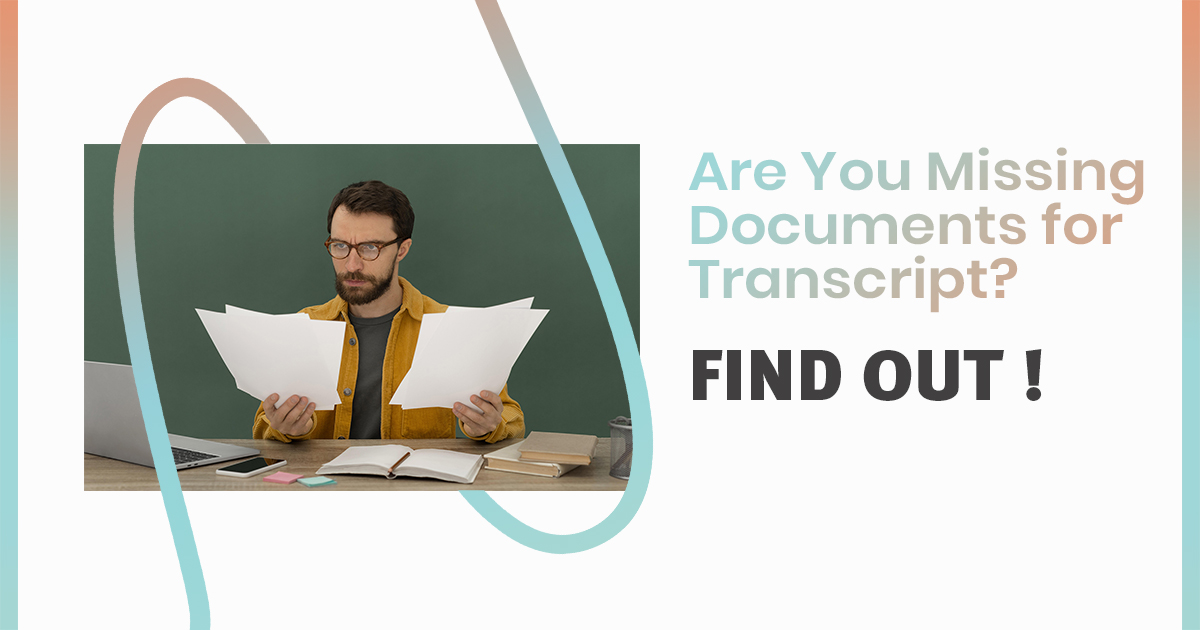
Preparing to apply for a transcript? Whether it’s for further education, a job application, or moving abroad, securing your academic transcript is a crucial step. But before you start, it’s vital to ensure you have all the necessary documents lined up. Missing just one could delay your entire application. Let’s make sure you’re fully prepared with a comprehensive checklist of what you might need.
Need help with your Academic Transcript? Contact Us Now!
Essential Documents for Transcript Applications
Official Identification
- Photo ID: A government-issued identification card, driver’s license, or passport is typically required to verify your identity.
Academic Records
- Proof of Enrollment: Documents that show you were registered in your program, such as enrollment confirmations or student ID cards.
- Degree Certificate: If you’ve completed your studies, a copy of your degree certificate may be necessary.
Application Forms
- Transcript Request Form: Most universities provide a specific form that needs to be filled out to request your transcript. Make sure to fill this out accurately and completely.
Payment Proof
- Fee Receipt: If there is a fee associated with your transcript request, you often need to show proof of payment. This can be a receipt or a bank transaction confirmation.
Authorization Documents
- Consent Form: If someone else is applying on your behalf, a signed consent form might be required to authorize the release of your records.
Additional Supporting Documents
- Academic Achievements: For specific purposes, like applying for scholarships or selective programs, you might also need to provide documents showcasing your academic achievements beyond regular coursework.
Read more: Need Your Transcript Immediately? Here’s How!
Commonly Overlooked Documents
Don’t let these less obvious but often necessary items slip through the cracks:
Change of Name Documentation
If you’ve had a legal name change since enrolling in or graduating from your institution, you’ll need documents like a marriage certificate or a legal name change certificate to prove your identity.
Special Request Forms
For specialized transcripts, such as those requiring an apostille or those to be sent directly to an international institution, additional forms may be required. Check with your registrar’s office for details.
How to Ensure You Have All You Need
Double-Check with Your University’s Registrar
Every institution has slightly different requirements. A quick call or email to your university’s registrar office can save you a lot of time and trouble.
Organize Documents Early
Start gathering your documents well in advance. Create a checklist and tick off each document as you secure it. Keeping everything organized in a folder—digital or physical—can help streamline the process when you submit your request.
Verify Document Validity
Ensure all copies are legible and that no document is expired. This is especially important for IDs and legal documents.
Read more: The Benefits of Electronic Transcripts Over Traditional Paper Versions
Conclusion
Getting your transcript shouldn’t be a hassle. By preparing all the necessary documents ahead of time, you can ensure a smooth and speedy application process. Missing a document for transcript can delay your plans, but with this guide, you’ll be one step ahead.
Need help gathering your documents or unsure if you’ve got everything required? Contact World Document Services at +91 62 3267 0879 or visit our website at World Document Services. Let our experts help you ensure that your transcript application is complete and ready to go!
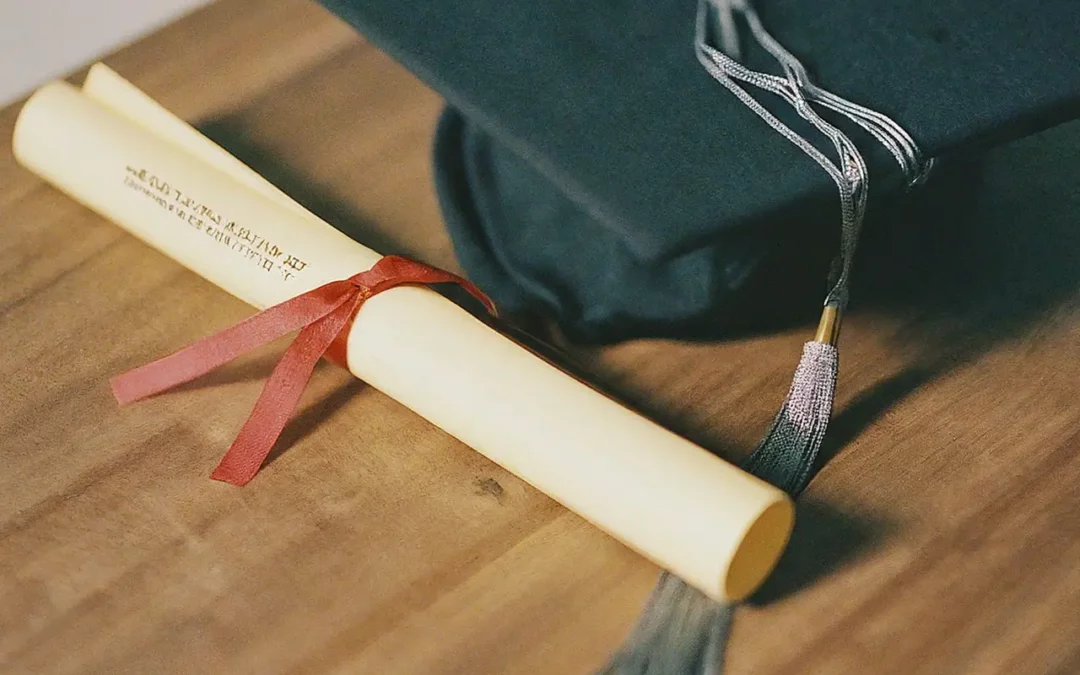
by World Document Services | Jul 10, 2024 | Most Viewed
Graduating from Vellore University marks a monumental achievement. Yet, navigating the process of obtaining your convocation certificates can be anything but celebratory. With the right guidance and strategic steps, this guide aims to transform what seems like an administrative maze into a seamless journey towards securing your credentials.

Understanding the Convocation Certificate Process at Vellore University
Navigating the procedures for obtaining your Vellore University convocation certificates can initially seem daunting. Traditionally, the process is laid out in discrete stages, starting from application submission to the eventual collection or delivery of the certificate. Each stage has its own set of requirements and timelines, often leading to confusion among graduates.
Need help with your Vellore University Convocation Certificate? Contact Us Now!
A common misunderstanding among students is the difference between provisional certificates and convocation certificates. While provisional certificates are issued shortly after completing your studies, serving as a temporary proof of graduation, convocation certificates are formal degrees awarded during the graduation ceremony, bearing a greater significance.
Read more: The Essential Guide to University Certificate Verification for Overseas Education
Pre-convocation Checklist: Preparing Your Documents
Prior preparation can vastly simplify the convocation certificate collection process. Begin by ensuring all your academic fees are cleared, a common prerequisite for certificate issuance. Additionally, verify your academic records for accuracy, ensuring no discrepancies could delay the process.
Compiling the necessary documents beforehand is crucial. Typically, this includes application forms, proof of fee payments, identification documents, and sometimes, letters of recommendation. Having these ready can expedite the process, minimizing unnecessary delays.
It’s also wise to maintain regular contact with the university’s administration office. They offer invaluable guidance and updates on your application’s status and any additional steps you might need to take.
Online Applications: A Step-by-Step Guide
Vellore University has made strides in digitizing the certificate issuance process. The online application portal simplifies submission and tracking, offering a step-by-step guide for anxious graduates. Initially, you’ll need to register on the portal, a process that requires basic personal information.
After registration, the site navigates you through uploading the necessary documents, a crucial step that demands attention to detail. It’s important to ensure all documents are clear and follow the university’s specified formats to prevent rejection.
Paying the fee online is the final step, after which you’ll receive an acknowledgment of your application. This digital process, while convenient, requires patience and a thorough understanding of each step to avoid errors that could set you back.
Common Issues and How to Resolve Them
Despite careful preparation, issues can arise during the convocation certificate process. Miscommunication regarding document requirements and delays in processing are common. Resolving these issues often involves direct communication with the university’s administrative offices.
Another frequent hurdle is discrepancies in academic records. Should this occur, it’s essential to promptly submit an application for correction, including supporting documents to substantiate your claim. Timely resolution of these errors ensures they don’t impede your certificate’s issuance.
Read more: Streamlining Your University Certificate Verification Process: Tips and Tricks for Students and Professionals
Leveraging Technology for Faster Certificate Delivery
In recent years, Vellore University has embraced technology to streamline the convocation certificate process. Online tracking systems enable graduates to monitor their application’s progress in real-time, offering peace of mind and reducing the need for in-person inquiries.
Furthermore, opting for digital certificate options where applicable can expedite the process. These digital versions are recognized and accepted by many institutions and employers worldwide, offering a faster, more secure way to access your credentials soon after graduation.
Embracing the Milestone with Ease
The journey from being a student to becoming an esteemed alumnus of Vellore University involves several critical steps, with obtaining your convocation certificate being a rite of passage. By following the outlined tips and leveraging available technologies, graduates can streamline this process, ensuring that the focus remains on celebrating their hard-earned achievements. Remember, your convocation certificate is not just a piece of paper—it’s a testament to years of dedication, hard work, and the beginning of a promising future.
by World Document Services | Jul 8, 2024 | Transcripts from University
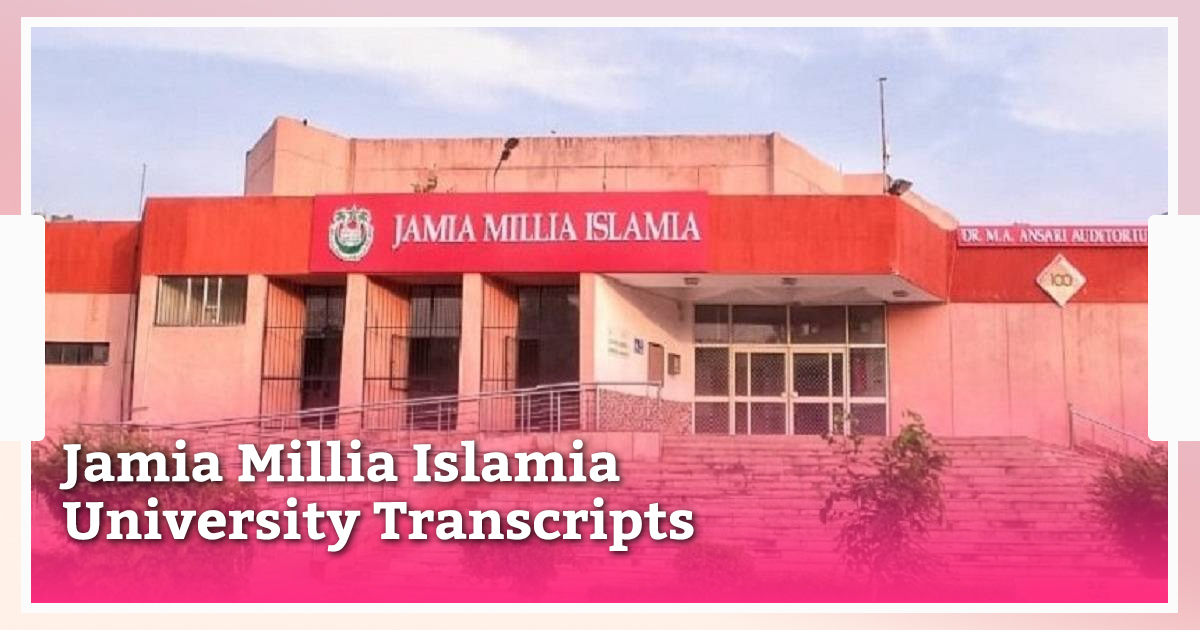
As a proud alumnus of Jamia Millia Islamia University (JMI), you’ve undoubtedly experienced a rich and fulfilling academic journey. Now, whether you’re looking to further your education, embark on a new career path, or move abroad, obtaining your official transcripts is a crucial step. At World Document Services, we specialize in simplifying this process for you. Here’s an expert guide to help you seamlessly procure your transcripts from JMI.
Need help with your Jamia Millia Islamia University Transcript? Contact Us Now!
Why Your JMI Transcripts Matter
Transcripts are more than just a piece of paper; they are your academic passport. They provide a comprehensive record of your educational achievements, including:
- Courses Taken
- Grades Received
- Degrees Conferred
These documents are essential for:
-
- Further Education: Applying to universities for higher studies.
- Employment: Verifying educational qualifications with employers.
- Immigration: Supporting visa and immigration applications.
Read more: The Essential Guide to University Certificate Verification for Overseas Education
Step-by-Step Guide to Obtain Transcripts from Jamia Millia Islamia University
Step 1: Gather Your Documents
Before starting the process, ensure you have:
- Copies of all semester mark sheets.
- Your degree certificate.
- A valid ID (Aadhaar card, passport, etc.).
Step 2: Access and Fill Out the Transcript Request Form
Visit the JMI official website to download the transcript request form, or obtain it from the university’s registrar office. Fill out the form meticulously, ensuring all details are accurate to avoid delays.
Step 3: Submit the Application
Submit your completed form and necessary documents online through the university’s portal, or mail them to the registrar’s office. Make sure all documents are properly authenticated.
Step 4: Pay the Transcript Fee
The transcript processing fee can be paid online via the university’s payment portal or through a bank draft. Keep your payment receipt safe, as you may need it for future reference.
Step 5: Processing and Verification
The university will verify and process your application, typically within a few weeks. Stay in touch with the registrar’s office for updates on your application status.
Step 6: Collection or Delivery
Once processed, you can collect your transcripts in person or have them sent directly to the specified address or institution. Specify your preferred delivery method in your application.
Read more: Streamlining Your University Certificate Verification Process: Tips and Tricks for Students and Professionals
World Document Services: Simplifying Your Transcript Procurement
At World Document Services, we understand that navigating the transcript procurement process can be daunting. Here’s how we make it easier for you:
- Complete Management: From form submission to document collection and delivery, we handle it all.
- Faster Processing: Our strong relationships with university officials ensure quicker processing times.
- Secure Delivery: We guarantee safe and timely delivery of your documents.
Download the World Document Services App
For a seamless experience, download our mobile app to apply for transcripts and track your application’s progress:
Conclusion
As an alumnus of Jamia Millia Islamia University, obtaining your transcripts is a critical step in your academic and professional journey. Let World Document Services assist you in making this process smooth and efficient, so you can focus on achieving your goals.
by World Document Services | Jul 6, 2024 | Transcripts from University
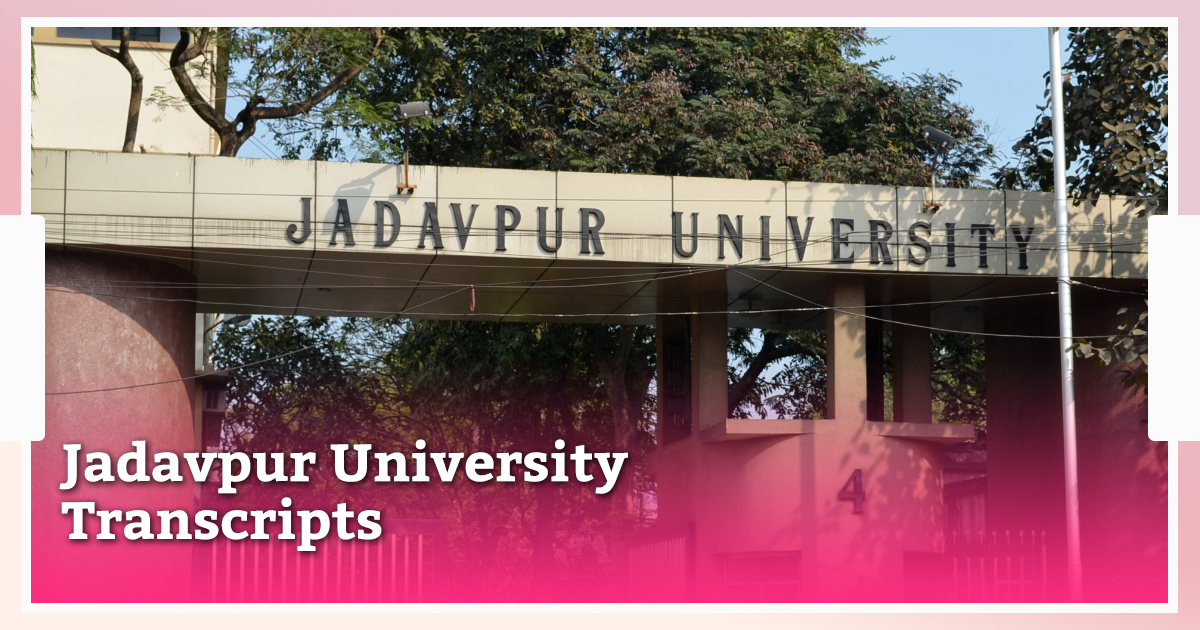
Jadavpur University, located in Kolkata, West Bengal, is a prestigious institution renowned for its excellence in engineering, arts, and science education. For students and alumni aiming to further their education or explore global career opportunities, obtaining official transcripts is a crucial step. This guide will walk you through the process of procuring transcripts from Jadavpur University and highlight how World Document Services (WDS) can streamline this process, ensuring your journey is smooth and hassle-free.
Need help with your Jadavpur University Transcript? Contact Us Now!
Why Transcripts from Jadavpur University Matter
Transcripts are official records that provide a detailed account of a student’s academic performance, including courses taken, grades received, and degrees conferred. These documents are vital for:
- Further Education: Required for applications to universities and colleges for higher studies.
- Employment: Employers often request transcripts to verify educational qualifications.
- Immigration: Necessary for visa applications and other immigration processes that require proof of educational credentials.
Read more: The Essential Guide to University Certificate Verification for Overseas Education
Understanding the Transcript Procurement Process at Jadavpur University
Step 1: Gather Necessary Documents
Ensure you have all the necessary documents ready, including:
- Copies of all semester mark sheets.
- Degree certificate.
- Valid identification proof (such as Aadhaar card, passport, etc.).
Step 2: Access the Transcript Request Form
Visit the official Jadavpur University website to download the transcript request form. Alternatively, you can obtain this form from the university’s registrar office. Make sure to carefully read the instructions provided.
Step 3: Fill Out the Application Form
Complete the application form accurately with all required details. Double-check for accuracy to avoid any delays in processing. Mistakes or omissions can result in prolonged waiting times.
Step 4: Submit the Application
Submit the completed application form along with the necessary documents either online, if the university offers this option, or by mailing them to the university’s registrar office. Ensure all documents are properly authenticated and certified.
Step 5: Pay the Transcript Fee
A fee is required to process the transcript request. This can usually be paid online through the university’s payment portal or via a bank draft. Keep the payment receipt for future reference, as proof of payment may be required.
Step 6: Processing and Verification
The university will process your application, which typically takes a few weeks. During this period, the university verifies the authenticity of the submitted documents. Stay in touch with the registrar’s office for updates.
Step 7: Collection or Delivery
Once processed, the transcripts can be collected in person or sent directly to the specified address or institution. Specify your preferred delivery method in your application. Opt for secure and tracked delivery to avoid any loss or damage.
Obtaining Duplicate Marksheet and Degree Certificate from Jadavpur University
For those needing duplicate marksheets or degree certificates, follow these steps:
- File a Report: Report the loss or damage of your documents to the police if necessary and obtain a report.
- Complete an Application: Fill out the duplicate document request form available on the Jadavpur University website or from the registrar office.
- Submit Supporting Documents: Include a copy of the police report (if applicable), identification proof, and an affidavit stating the reason for the request.
- Pay the Required Fee: Submit the fee for issuing duplicate documents. The fee structure may vary depending on the type of document requested.
- Processing Time: Allow several weeks for the university to process your request and issue the duplicates. Be proactive in following up with the university for status updates.
Read more: How to Obtain Transcripts from Nagpur University
The Role of World Document Services (WDS)
World Document Services can greatly enhance the ease and efficiency of obtaining transcripts and other academic documents from Jadavpur University. Here’s how WDS can help:
- Complete Management: WDS handles everything from form submission to document collection and delivery, providing end-to-end service.
- Faster Processing: With strong relationships with university officials, WDS ensures quicker processing times, minimizing your wait.
- Secure Delivery: WDS guarantees the safe and timely delivery of your documents to the specified destination, ensuring peace of mind.
Frequently Asked Questions (FAQs)
Q1: How long does it take to get transcripts from Jadavpur University?
A: The processing time typically takes a few weeks, but it can vary depending on the university’s workload and the completeness of your application.
Q2: Can I apply for Jadavpur University transcripts online?
A: Yes, you can apply online through the university’s official website if they offer this service. Otherwise, you can mail your application to the registrar’s office.
Q3: What should I do if I lose my marksheet or degree certificate?
A: File a police report and then apply for a duplicate document through the university by filling out the necessary forms and submitting the required documents.
Q4: How can World Document Services help me get my transcripts faster?
A: WDS handles the entire process from form submission to document delivery, leveraging strong university connections to expedite processing times.
Q5: What payment methods are accepted for transcript fees?
A: Payments can usually be made online via the university’s payment portal or through a bank draft. Always check the university’s specific payment guidelines.
Conclusion
Obtaining transcripts and other academic records from Jadavpur University is a crucial step for many students and alumni. By following the steps outlined above and leveraging the services of World Document Services, you can ensure a smooth, efficient, and hassle-free process. Whether you’re advancing your education, starting a new job, or moving abroad, having the right documents is essential, and WDS is here to support you every step of the way.
Download the World Document Services App
For a more seamless experience, download the World Document Services mobile app to apply for transcripts and track the progress of your application:
by World Document Services | Jul 3, 2024 | Transcripts from University
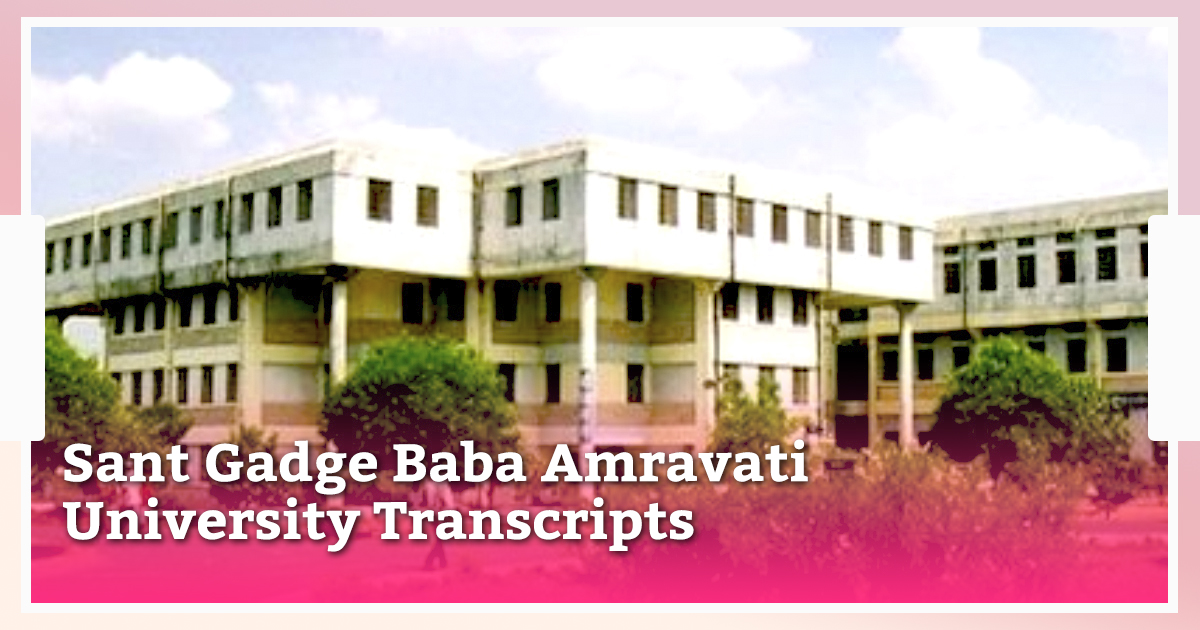
Sant Gadge Baba Amravati University (SGBAU), located in Amravati, Maharashtra, offers a wide array of undergraduate, postgraduate, and doctoral programs. For students and alumni looking to further their education or pursue global career opportunities, obtaining official transcripts is essential. This guide will walk you through the process of procuring transcripts from SGBAU and highlight how World Document Services (WDS) can streamline this process.
Need help with your Sant Gadge Baba Amravati University Transcript? Contact Us Now!
Why Transcripts from Sant Gadge Baba Amravati University are Essential
Transcripts are official records that provide a detailed account of a student’s academic performance, including courses taken, grades received, and degrees conferred. These documents are crucial for:
- Further Education: Required for applications to universities and colleges for higher studies.
- Employment: Employers often request transcripts to verify educational qualifications.
- Immigration: Necessary for visa applications and other immigration processes that require proof of educational credentials.
Read more: Streamlining Your University Certificate Verification Process: Tips and Tricks for Students and Professionals
Steps to Obtain Transcripts from SGBAU
Step 1: Prepare Your Documents
Ensure you have all the necessary documents ready, including:
- Copies of all semester mark sheets.
- Degree certificate.
- Valid identification proof (such as Aadhaar card, passport, etc.).
Step 2: Access the Transcript Request Form
Visit the official SGBAU website to download the transcript request form. Alternatively, you can obtain this form from the university’s registrar office.
Step 3: Fill Out the Application Form
Accurately complete the application form with all required details. Double-check for accuracy to avoid any delays in processing.
Step 4: Submit the Application
Submit the completed application form along with the necessary documents either online, if the university offers this option, or by mailing them to the university’s registrar office.
Step 5: Pay the Transcript Fee
A fee is required to process the transcript request. This can usually be paid online through the university’s payment portal or via a bank draft. Retain the payment receipt for future reference.
Step 6: Processing and Verification
The university will process your application, which typically takes a few weeks. Ensure you have provided all required information to avoid delays.
Step 7: Collection or Delivery
Once processed, the transcripts can be collected in person or sent directly to the specified address or institution. Specify your preferred delivery method in your application.
Obtaining Duplicate Marksheet and Degree Certificate
For those needing duplicate marksheets or degree certificates, follow these steps:
- File a Report: Report the loss or damage of your documents to the police if necessary.
- Complete an Application: Fill out the duplicate document request form available on the SGBAU website or from the registrar office.
- Submit Supporting Documents: Include a copy of the police report (if applicable), identification proof, and an affidavit stating the reason for the request.
- Pay the Required Fee: Submit the fee for issuing duplicate documents.
- Processing Time: Allow several weeks for the university to process your request and issue the duplicates.
The Role of World Document Services (WDS)
World Document Services can greatly enhance the ease and efficiency of obtaining transcripts and other academic documents from SGBAU. Here’s how WDS can help:
- Complete Management: WDS handles everything from form submission to document collection and delivery.
- Faster Processing: With strong relationships with university officials, WDS ensures quicker processing times.
- Secure Delivery: WDS guarantees the safe and timely delivery of your documents to the specified destination.
Read more: How to Obtain Transcripts from Nagpur University
Frequently Asked Questions (FAQs)
Q1: How long does it take to get transcripts from SGBAU?
A: The processing time typically takes a few weeks, but it can vary depending on the university’s workload.
Q2: Can I apply for SGBAU transcripts online?
A: Yes, you can apply online through the university’s official website if they offer this service. Otherwise, you can mail your application to the registrar’s office.
Q3: What should I do if I lose my marksheet or degree certificate?
A: You should file a police report and then apply for a duplicate document through the university by filling out the necessary forms and submitting required documents.
Q4: How can World Document Services help me get my transcripts faster?
A: WDS handles the entire process from form submission to document delivery, leveraging strong university connections to expedite processing times.
Q5: What payment methods are accepted for transcript fees?
A: Payments can usually be made online via the university’s payment portal or through a bank draft. Always check the university’s specific payment guidelines.
Conclusion
Obtaining transcripts and other academic records from Sant Gadge Baba Amravati University is a crucial step for many students and alumni. By following the steps outlined above and leveraging the services of World Document Services, you can ensure a smooth, efficient, and hassle-free process. Whether you’re advancing your education, starting a new job, or moving abroad, having the right documents is essential, and WDS is here to support you every step of the way.
Download the World Document Services App
For a more seamless experience, download the World Document Services mobile app to apply for transcripts and track the progress of your application:







 Call Us
Call Us Mail Us
Mail Us WhatsApp
WhatsApp
